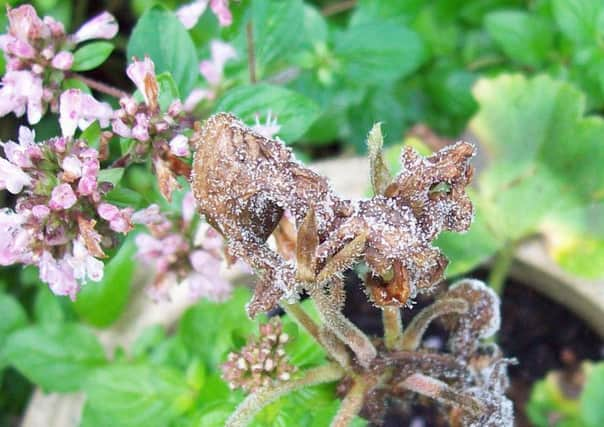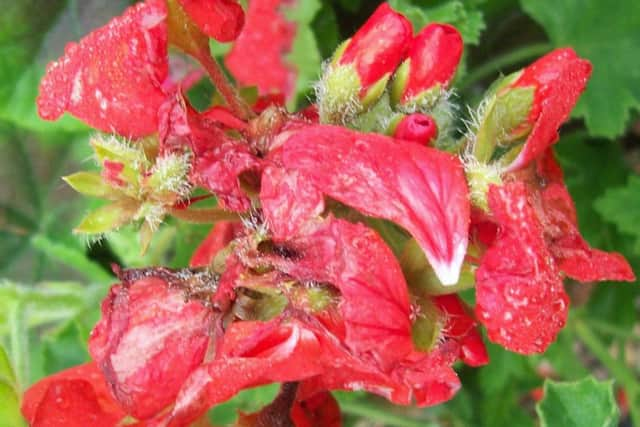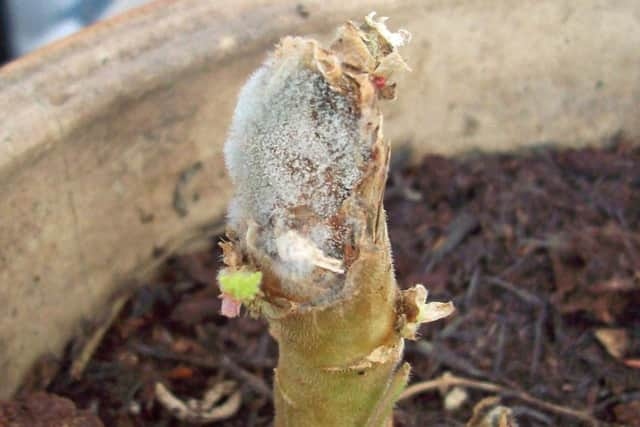GARDENING: Tackling the problem of '˜ugly' grey mould
This article contains affiliate links. We may earn a small commission on items purchased through this article, but that does not affect our editorial judgement.


Grey mould normally enters through a wound or infects plants under stress, but healthy plants are also at risk in humid conditions – no time of the year is ‘safe’ from it.
Apples, grapes, strawberries, blackberries, raspberries, gooseberries, beans, curcubits, lettuce, tomatoes, Chrysanthemum, Cyclamen, Pelargonium (geranium), and Primula are particularly at risk.


Advertisement
Hide AdAdvertisement
Hide AdUnlike powdery mildew, which has a very specific host, Botrytis has a very wide range, but there are closely-related species which are much more specific, including those infecting snowdrops, peonies and broad beans.
GREY MOULD SYMPTOMS
Under humid conditions, fuzzy grey mould grows on buds, leaves, flowers or fruit.
Buds and flowers shrivel and die.


Small black seed-like structures form in infected material.
On soft fruit, particularly gooseberries, Botrytis infection kills branches, but the fuzzy mould is seldom seen.
On strawberries and grapes, infection leads to a soft brown rot, often as the fruit is ripening.
ORGANIC CONTROL


Advertisement
Hide AdAdvertisement
Hide AdHygiene is vital, especially under glass. Remove dead and dying leaves, buds and flowers immediately.
Don’t leave dead plant material lying around.
Improve ventilation in glasshouses.
Do not overcrowd plants, either under glass or in beds.


In torrential rain where flowers are soaked, especially seen in Pelargonium flowers, remove them as soon as possible.
JOBS FOR THE WEEKEND
Deadhead flower borders regularly to prolong flowering. Disbud and deadhead dahlias if growing for large blooms. Leave roses that produce attractive hips.
Some seeds are best planted just after collection, and others may need specific climatic conditions to break dormancy (e.g. some alpines). If unsure, then sow seeds in ‘batches’, i.e. one immediately after collecting, one in winter, and one in the following spring.
Advertisement
Hide AdAdvertisement
Hide AdMulching borders can help retain moisture, and keep down the weeds – this will save a lot of work. A really thick layer of mulch (5-7.5cm/2-3in all over) works best.
Inspect lilies for red lily beetle whose larvae can strip plants in days and vine weevils can also be a problem this time of year.
Look out for and treat black spot on roses and scab on Pyracantha.
Fast-growing hedges such as Leyland cypress should be clipped as necessary throughout the growing season, but avoid birds’ nests.
Advertisement
Hide AdAdvertisement
Hide AdNeat circular areas removed from the edges of rose and other leaves are telltale signs of leaf-cutter bees at work. These fascinating creatures are best tolerated since damage is rarely severe.
Inspect any yellow patches on the lawn: if they contain small pinkish-red strands, then you may have red-thread in the lawn. This is a fungal disease, common on light soils after heavy rain, when the nitrogen is washed out of the soil. A nitrogen-rich fertiliser should remedy the situation, and the damage is rarely long-lived.
Some lawns may be heavily infested by ants. Brushing out the nests on a dry day is the best method of control, and should be done prior to mowing.
CONTACT
For more on these topics, plus cook what you grow, traditional recipes, North East information, environmental news and more, log on to www.mandycanudigit.co.uk (now smartphone friendly), www.sunderlandecho.com/gardening, follow me on Twitter @MandyCanUDigItor you can like me on Facebook at Mandycanudigit